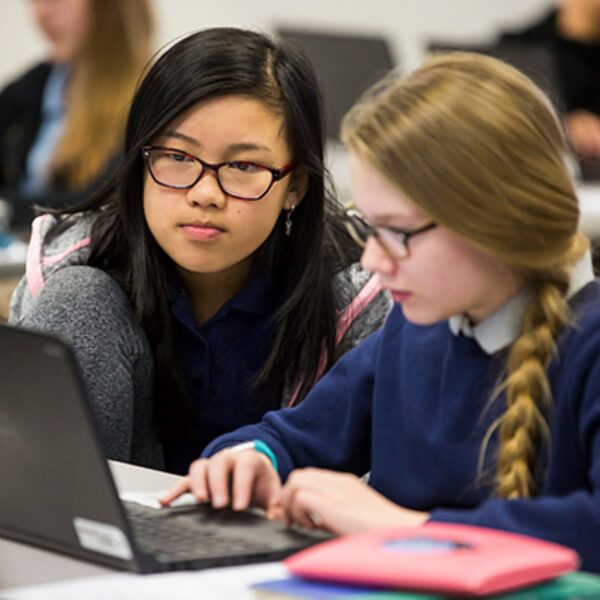
At The Learning Accelerator, we believe that a core part of blended learning is the use of real-time data. Students, parents, and educators continuously monitor learning progress to assess for mastery, tailoring learning activities to match each learner’s needs.
However, with the influx of so much data — from informal observations, formative assessments, summative assessments, independent practice, blended learning programs, and more — teachers and school leaders feel like they’re drinking from a firehose, lacking the time and often the skills to make sense of it all. Consequently, blended learning data falls to the wayside as educators prioritize what they know best — observational and assessment data. Deprioritizing blended learning data, though, can both be dangerous and wasteful.
Ignoring blended learning data can lead to unproductive learning
It’s all too easy to fall into the trap of simply using blended learning programs in a classroom and believing that all students are getting targeted practice. How do we know if a student is progressing? Stuck and unable to overcome a challenge? Or not even being productive at all? Blended learning, absent of the strategic use of data, can quickly become a babysitting tool. Though students will likely show excitement with the launch of a flashy new program, investment may quickly fade along with engagement and any chance of productive learning.
Teachers, school leaders, and district/CMO leaders need to integrate blended learning data into all data streams — data walls, report cards, etc. — ensuring students and teachers are invested in the programs from day one and making them useful tools that support student learning.
Blended learning data can give rich insights into student learning
Beyond building investment, blended learning data give rich insights into a student’s learning journey. Programs commonly produce data that fall into three categories: usage, progress, and mastery. Usage — the time a student is “on task” — sheds light on the input and how much time students are actually on task. Progress is the number of lessons or tasks completed, indicating, well, progress. Last, but not least, mastery is the most powerful of the metrics, measuring actual mastery of concepts.
With these data, teachers can be strategic about their time and resources in class. They can reduce the number of formative assessments, knowing that they can get a snapshot of student mastery within blended learning programs. And should they decide to still collect mastery data through assessments, they can triangulate various data to get a clearer and more comprehensive picture of student mastery. With better, real-time insights into student needs, teachers can then tailor instruction and personalize learning for students, pulling from accurate data to target key skills for each student.
Furthermore, teachers can identify each student’s learning gaps and utilize a variety of tools — both online and offline — to assign lessons and personalize online learning even further, ensuring the practice is as targeted as possible.
Data empowers students to own their learning
While data is really powerful in supporting teacher decision making, it can be even more powerful when in the hands of students. Too often our classrooms are designed for passive learning, but by ensuring students can monitor their own progress, they become drivers of their learning. Students build skills to set goals, track their progress, troubleshoot as needed, and reflect on their inputs and outcomes. Especially with blended learning programs, where content is always accessible, students are able to drive towards both mastery and growth, tracking mastered concepts and targeting their learning with not-yet-mastered content.
Blended learning data can illuminate what’s working
Once schools have fully integrated usage, progress, and mastery data, they can get to the real potential in blended learning data — discovering the efficacy of the programs. While student learning is highly nuanced and even formal, long term research studies can have flaws, schools and networks can pool various types of data, and, with some lightweight analysis, surface trends.
For example, identifying usage and progress can help educators understand inputs and outputs, but by finding the efficiency and rate of completion — progress per unit of usage (lessons per hour, for example) — educators better understand student learning. Students with low efficiency may need support with a conceptual misunderstanding or a bit more motivation, while students with too high efficiency may be working on content that is simply too easy.
By connecting blended learning data with other forms of mastery data (often assessments), networks can attempt to find correlations between usage/progress/mastery in blended learning programs and mastery outside of the programs. While it’s extremely challenging to find causation, schools can work towards finding connections and associations, giving them more confidence that their instructional design gives their students what they need.
Let’s continue the conversation at iNACOL!
Going to iNACOL this year and interested in diving deeper? Join Rui Bao (Head of Data and Strategy at Caliber Schools), Kevin Hoffman (Associate Manager of Innovative Learning at Aspire Public Schools), Jin-Soo Huh (Executive Director of Personalized Learning at Distinctive Schools), and myself in our interactive discussion — Beyond Minutes: Leveraging Your Blended Learning Data to Determine Efficacy on Wednesday, October 25, from 2:15-3:15 pm in the Northern Salon E3. See you there!

